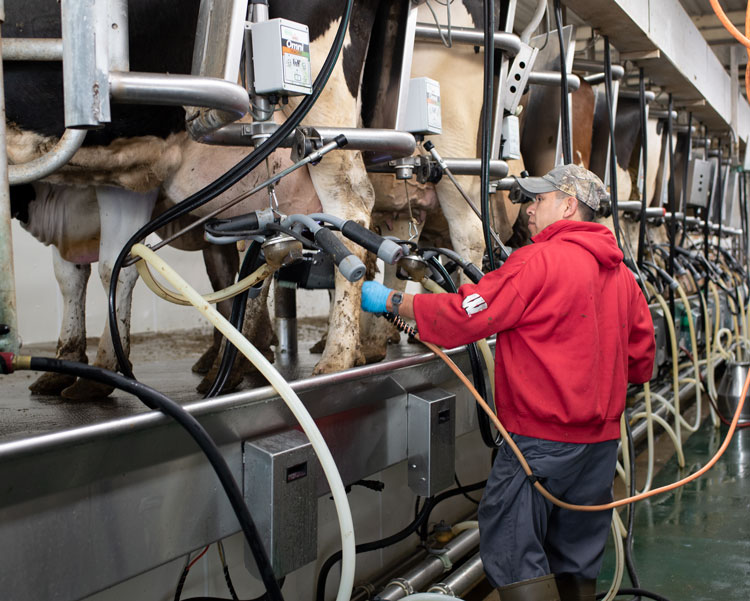
“Personnel training must be the first step in dairy operations,” was the message Adrian Barragan shared with dairy producers and consultants in a Penn State Extension webinar.
A farm’s employees have a role in everything that happens on the farm. Barragan pointed out that this includes changes we can observe, like a drop in milk production or decline in pregnancy rate, as well as things we can’t see, such as heat stress or disease diagnoses. Managing any of these areas means investing in the people that do the work.
Further, training enhances the work environment with a sense of belonging and can improve attitude. When the people who are with the cows day in and day out feel valued, they are more willing to share insights that can solve problems on the farm, Barragan said.
With these benefits in mind, Barragan shared the approach he uses when consulting farms and training employees.
Assign appropriate jobs
Before training must come the job description. Probably even before hiring, a farmer will determine what experience that person already has. Also helpful prior to training is doing a personality assessment, which can be quick and simple. With a better idea of how an employee thinks, a supervisor can understand how they learn, what motivates them, and how much information or independence they want. This can help build more relevant training tools and be useful in having a more effective relationship with the employee.
Based on the personality and experience assessments, a farmer can assign tasks an employee will thrive with. As an example, Barragan explained one case where an employee in the parlor was always reserved and didn’t seem truly engaged with his job. It turned out that this introverted employee enjoyed coming to work more after he was moved to the independent job of feeding.
Train, evaluate, retrain
When the right job has been assigned, the initial training can be completed — no matter how much experience the person might have. “Maybe they have been milking cows for 20 years, but they haven’t been milking cows at your farm for 20 years,” Barragan noted.
A combination of hands-on training and lecture discussions has been shown to be best for retention. Barragan described that he starts with a discussion to explain the “why” of a procedure, show the consequences if it’s done incorrectly, and answer any questions. Then, he moves on to a hands-on demonstration to show the “how” of the procedure, provide practice, and adjust any improper methods. Use clear protocols that every employee can understand to keep these procedures top of mind.
Once training is complete, measure progress regularly to keep employers and employees accountable. This is flexible for every farm based on what you want to track and how often you want to do it. “There are many metrics you can assess or create,” Barragan said. For example, in the area of facilities, you could record cleanliness scores or bunk management practices, such as feed delivery times.
Regardless of what you decide to use as a benchmark, make it concise to analyze, and look for trends. Does pregnancy rate vary by employee or heat detection method? Is feed pushed up more regularly on certain days of the week than others? These questions help identify where retraining may be most warranted.
“Procedural drift is a real thing,” Barragan emphasized. He recommended retraining every three to six months, though that can be adjusted to fit personnel performance. A lack of retraining (or initial training) can lead to high turnover rates, Barragan said — and then you’re right back where you started.








